Want To Play Better Golf This Weekend? I Can Cure Your Slice In 60 Minutes...
So many amateurs are plagued with a slice, which hampers their scoring potential on the golf course. However, with my expert tips, I can cure you in 60 minutes

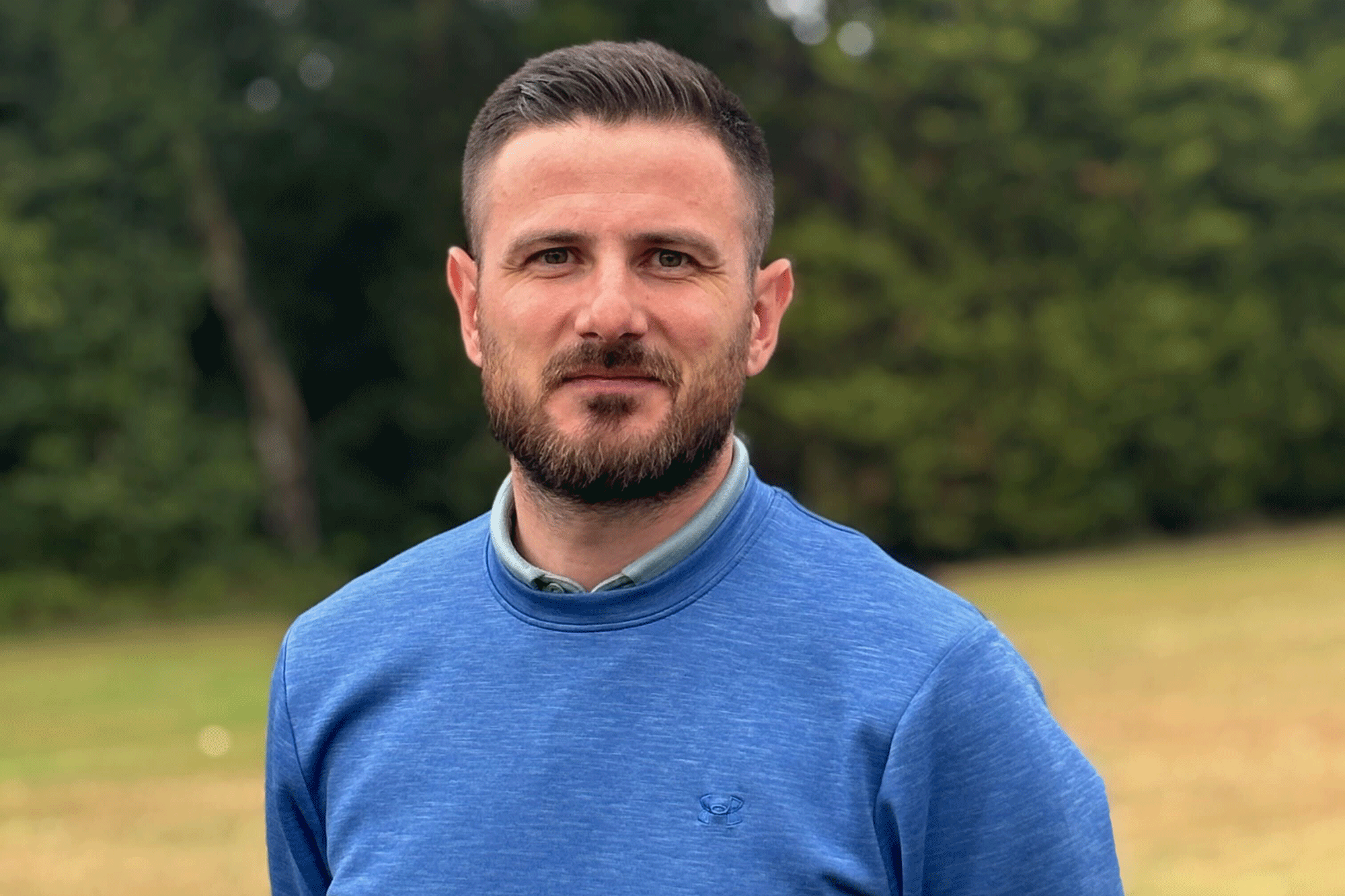
Andrew Reynolds
If your game is anything like mine, navigating your way around the golf course with a horrendous slice can be very tricky, especially if you are fond of shooting low scores.
Learning how to stop slicing the ball became a priority of mine this season, and I have to say these expert tips from PGA professional and Top 50 Coach Andrew Reynolds really helped.
Andrew has more than 47 years experience coaching amateurs and professionals, empowering them to improve their golf swing and play better on the course.
In this article, he identifies the common causes of the slice and shares a few practical steps any golfer can take to cure it for good...
Better By Saturday: I Can Cure Your Slice In 60 Minutes
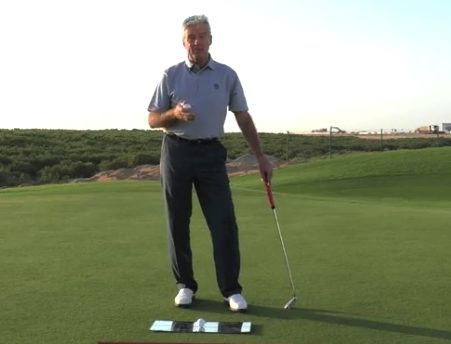
Andrew was appointed Head Professional at Royal Cinque Ports in 1978, aged just 23. He is only the sixth professional in the club's 125-year history. From 2010 to 2013, he was lead coach for the Mens England “A” squad and helped work with many established European Tour players. Andrew also enjoyed success on the European Senior Tour, most notably his top-20 finish in the Senior Open Championship at Turnberry.
1. What Is Square?
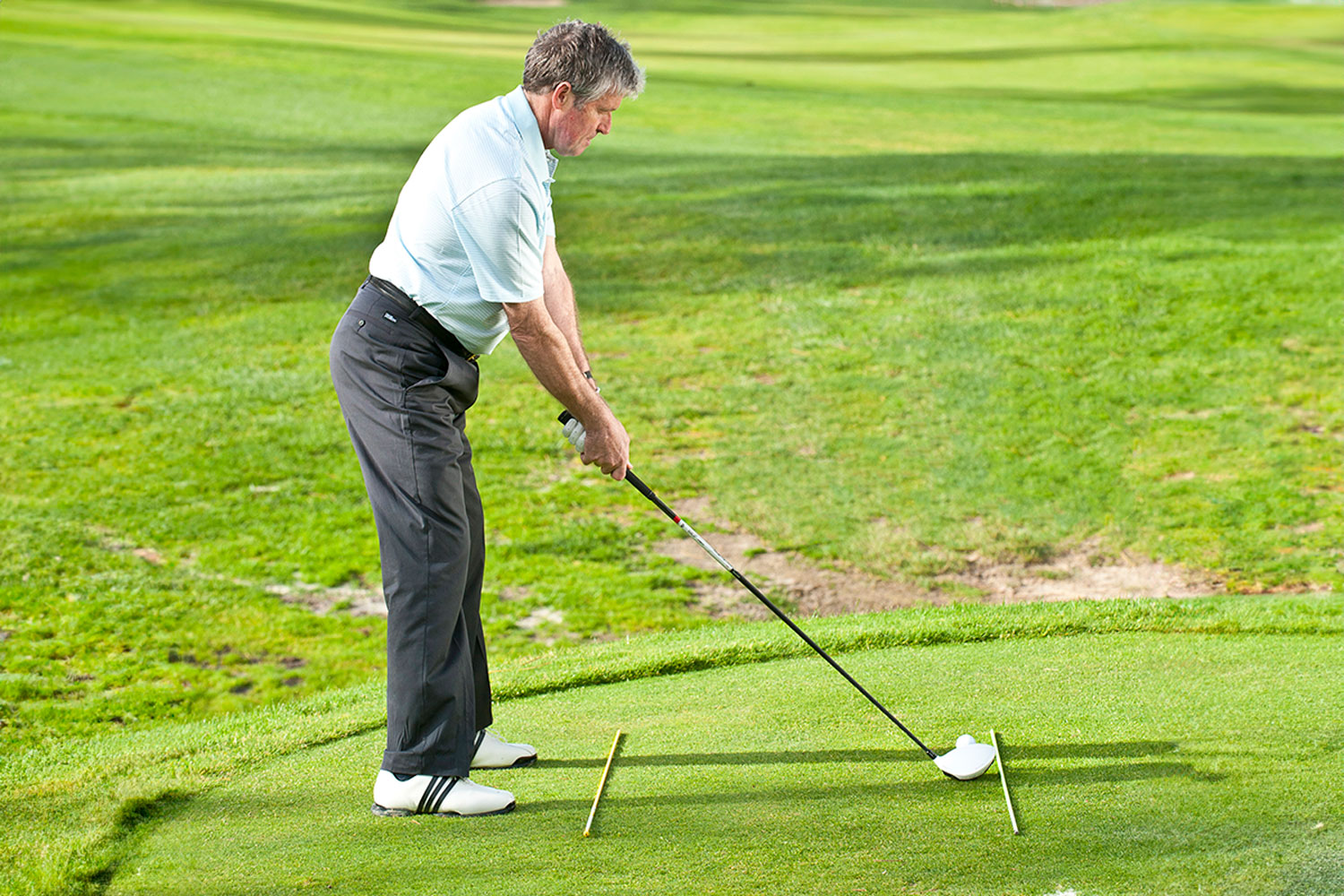
Alignment is key in curing a slice, so work on this with some alignment sticks at the range
Set up square. It's an instruction coaches give all the time but few actually explain exactly what they mean by this.
It might seem logical to set your feet, hip and shoulders to aim at the target. But this is actually wrong.
Take a look at my address position in the image above. While the club is aiming at the target, my feet, hips and shoulders are not. They are all parallel to the target line. If you are struggling with a slice, the chances are that your alignment is off (your body is likely to be open to your target line).
Subscribe to the Golf Monthly newsletter to stay up to date with all the latest tour news, equipment news, reviews, head-to-heads and buyer’s guides from our team of experienced experts.
So the next time you head to the range, work hard to get into this position using golf alignment sticks.
From there you'll find it far easier to make a swing that allows you to hit the ball dead straight.
2. Left Wrist Position
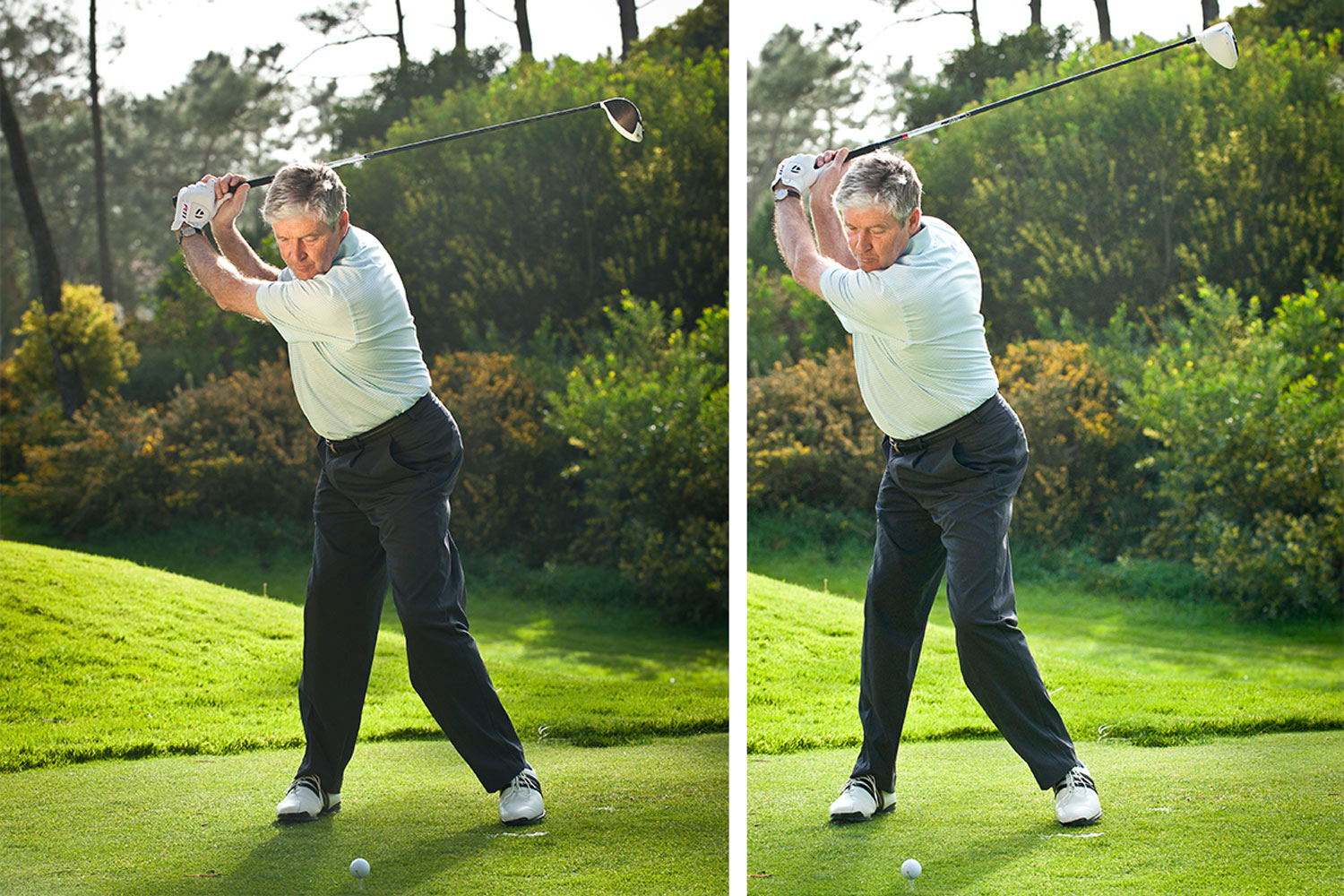
This position at the top of the backswing can tell us a lot about what will happen through impact, so ensure you work on achieving the position on the right of this image
Take a look at the two photos side by side here. You might not think there's a huge difference, but there is.
In the right-hand photo, I'm in a position to hit a straight, powerful drive and in the other I'm likely to hit a slice.
If your left wrist flexes towards your head at the top of the backswing you'll be opening the face and that makes it likely you'll cut across the ball through impact (left image).
Work on keeping that left wrist more solid at the top and you could notice a huge difference to the quality of your drives.
Need a little more info... check out our handy guide on wrist hinge in the golf swing.
3. Release Drills
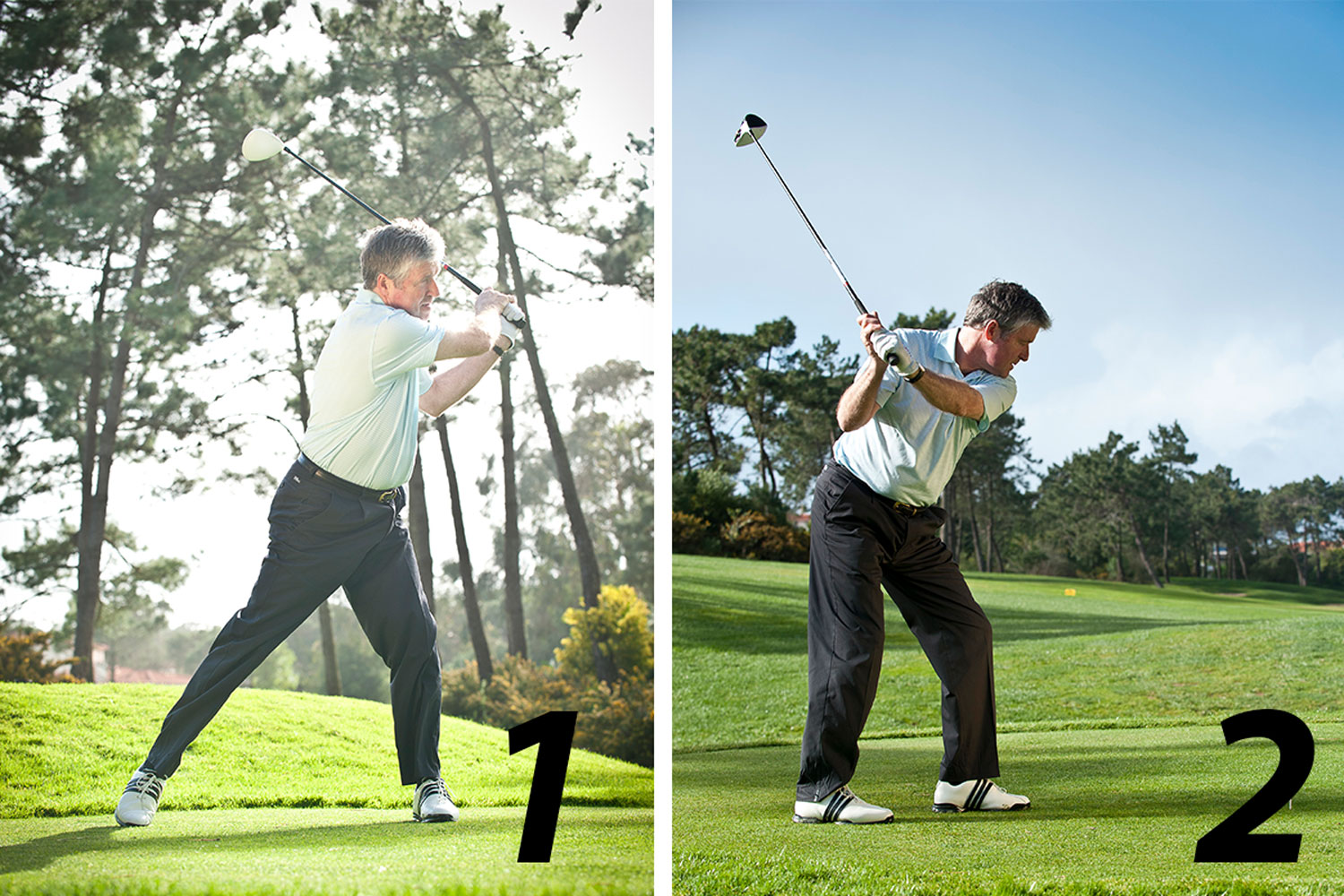
These two drills are great for slicers, helping to promote a straighter ball flight
Having worked on your address position, it's time to think about the swing.
One mistake that many golfers make is to get too defensive with the driver in hand and try to guide the ball down the fairway.
This might seem like the logical thing to do if you are concerned about hitting the fairway but it will only prevent you from making an effective release.
The inevitable result is that you'll leave the clubface open through impact. Here are two drills that will help you guard against this:
1) Widen your stance as I have done here (left) and make a series of practice swings. Your swing will naturally become rounder, improving the release. This is exagerrated in relation to how wide your stance should be in the golf swing, but it will help hugely.
2) Address the ball and then move your right foot back (right). Again this will force your swing to become rounder and activate the release.
4. Swing Path
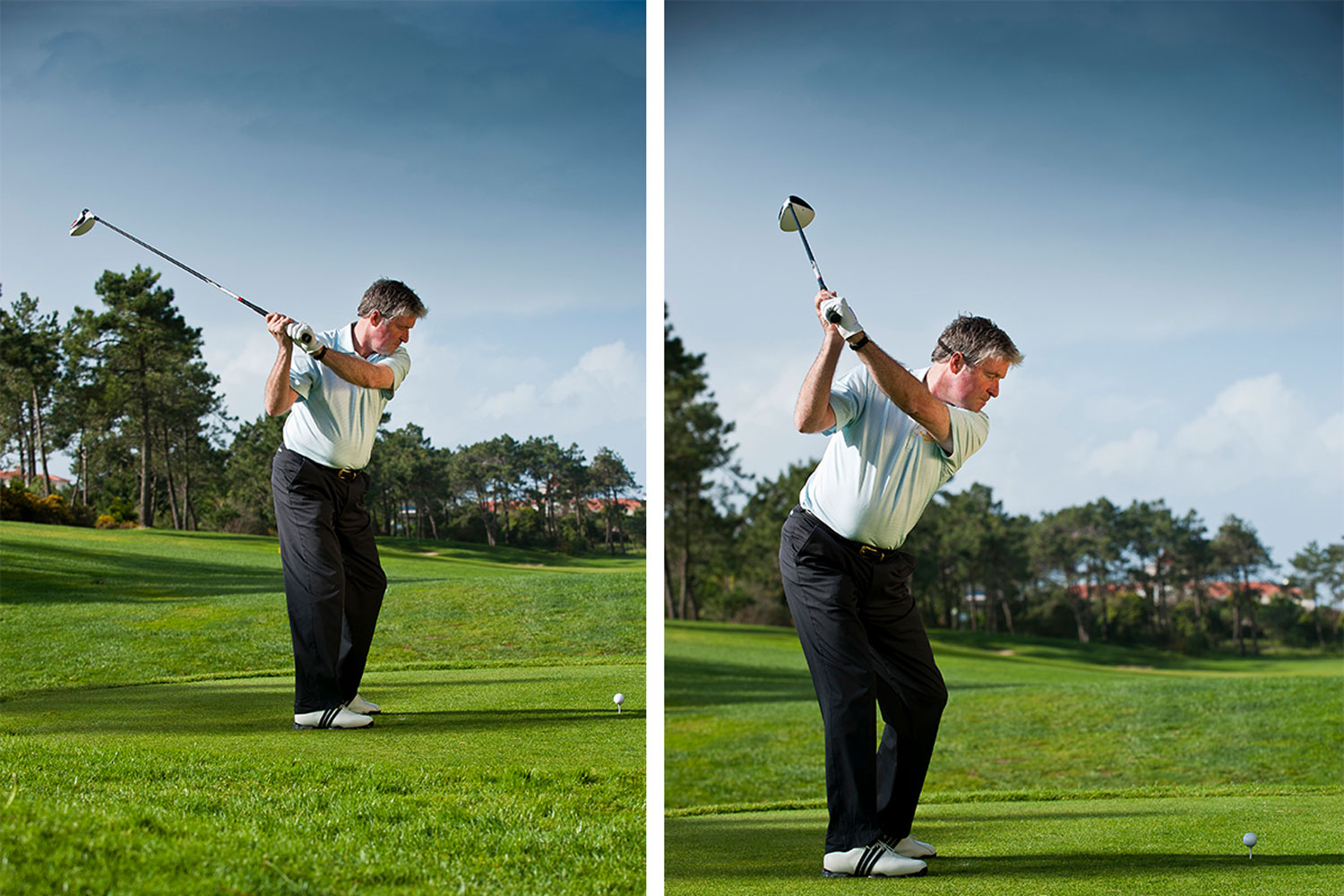
Understanding and correcting your swing path is crucial, so aim for something more like the position on the right of this image to banish your slice for good
If you've struggled with a slice, there is a chance your swing is too flat. Starting with an inside takeaway and reaching the top of the backswing position, shown here on the left, is a regular fault.
From here, your arms, body and wrists need to work too hard to square the club through impact. Leaving drives out right is inevitable.
So work on getting the club on a better path (right image). From this top-of-backswing position a good upper body turn and powerful release will not only straighten out your drives, but will add genuine power.
Use a mirror or video your swing to see the right positions and then work to groove them into your game.

Baz joined Golf Monthly in January 2024, and now leads the instruction section across all platforms - including print and digital. Working closely with Golf Monthly's Top 50 Coaches, he aims to curate and share useful tips on every aspect of the game - helping amateurs of all abilities to play better golf. Baz also contributes weekly to the features section, sharing his thoughts on the game we love and the topics that matter most. A member at Sand Moor Golf Club in Leeds, he looks forward to getting out on the course at least once a week in the pursuit of a respectable handicap.
Baz is currently playing:
Driver: Benross Delta XT
3-Wood: Benross Delta XT
Hybrid: TaylorMade Stealth 4 Hybrid
Irons: Benross Delta XT 5-PW
Wedges: TaylorMade RAC 60, Callaway Jaws MD5 54
Putter: TaylorMade Spider Tour
- Andrew ReynoldsTop 50 Coach
You must confirm your public display name before commenting
Please logout and then login again, you will then be prompted to enter your display name.